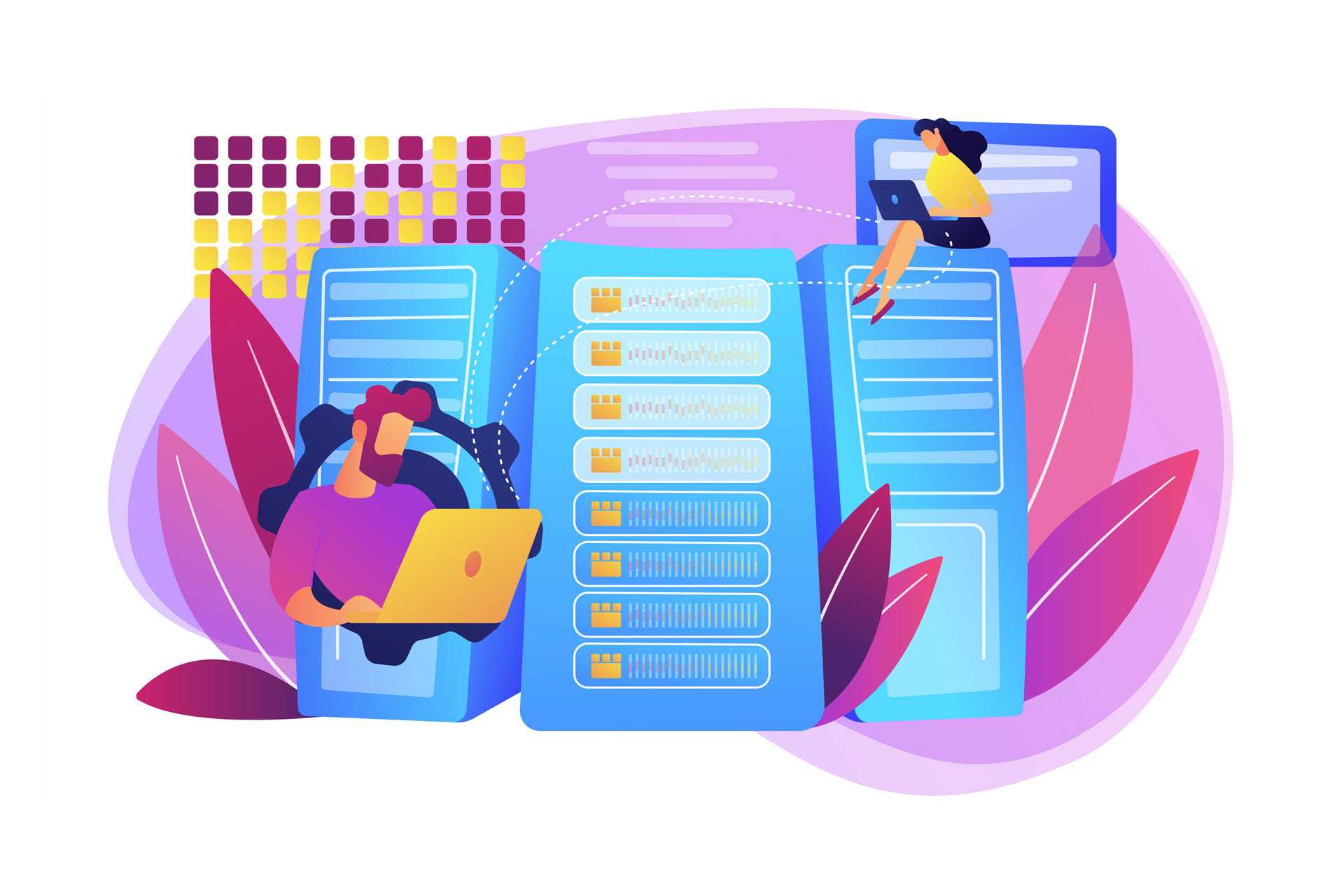Unclear agreements and unmet service expectations frequently cause tension and conflict between IT service providers and their clients. Service level agreements (SLAs) address these issues by setting clear, measurable expectations for service performance. By outlining specific metrics, roles, and responsibilities, SLAs ensure both parties share a mutual understanding of service standards and recourse for non-compliance.
This article describes SLAs, explores their types and components, and provides best practices for creating them. Read to the end to understand how they enhance service delivery and customer satisfaction.

What Is a Service Level Agreement?
A service level agreement (SLA) is a formalized contract between a service provider and a customer that stipulates and defines both parties' expected service performance parameters, quality benchmarks, and responsibilities. SLAs set clear, quantifiable metrics for service delivery, ensuring accountability and providing a framework for performance monitoring, reporting, and dispute resolution.
What Is an Example of an SLA?
To better understand service level agreements, let's examine an example of an SLA between an IT service provider and a client. This SLA includes the following components:
- Uptime guarantee. The service provider commits to maintaining a minimum of 99.9% uptime for the IT system. This guarantee ensures the system is operational and accessible to customers for at least 99.9% of the agreed service period, typically calculated monthly.
- Response time. The SLA outlines specific timelines for the service provider to respond to different levels of service incidents. For critical issues (Priority 1), a response is required within 30 minutes, while lower-priority issues have longer response times.
- Resolution time. The agreement details timelines for resolving various service incidents. Priority 1 issues must be resolved within four hours, and Priority 2 issues have a resolution time of eight hours.
- Support availability. The SLA specifies the availability of technical support services, including 24/7 support through multiple channels such as phone, email, and live chat. It also outlines detailed escalation procedures for unresolved issues.
- Penalties. The SLA includes explicit penalties for non-compliance with its terms. For instance, the provider may issue service credits to the customer for each hour of downtime beyond the guaranteed uptime.
What Services Do SLAs Cover?
Service level agreements cover a wide range of services across various industries. Here are the most common types of services SLAs address:
IT Services
SLAs for IT services address areas such as the availability and performance of cloud services, the maintenance and support of IT systems, and the security and compliance of data centers and cybersecurity services. For example, an SLA may guarantee a certain percentage of uptime for a cloud-based application or set response times for IT support incidents.
Telecommunications Services
SLAs in telecommunications cover internet and network services, voice services, and mobile services. They may include guarantees for network uptime, bandwidth, latency, call quality, and mean time to repair (MTTR) for any service disruptions. For instance, an SLA might ensure that network availability remains above 99.9% and that service providers resolve any outage within a specific timeframe.
Business Process Outsourcing (BPO) Services
SLAs for BPO services focus on customer support, back-office processing, and human resources services. They often include metrics for response times, resolution rates, and customer satisfaction scores. For example, an SLA for a customer support center might stipulate that they must answer a certain percentage of calls within a specific timeframe and that customer satisfaction scores remain above a particular threshold.
Logistics and Supply Chain Services
SLAs in logistics and supply chain management address transportation services, warehousing services, and third-party logistics services. They may include guarantees for on-time delivery, transit times, order accuracy, and inventory management. For instance, an SLA might ensure that a certain percentage of orders are delivered on time and that inventory accuracy remains above a specific level.
Facilities Management Services
Facilities management services SLAs cover maintenance, security, and cleaning services. They often include metrics for response times, resolution rates, and preventive maintenance schedules. For example, an SLA for a maintenance service might guarantee that the service provider completes emergency repairs within a certain timeframe and conducts preventive maintenance according to a predefined schedule.
Looking for reliable IT services with clear, measurable expectations? phoenixNAP's comprehensive solutions and robust SLAs ensure your service standards are always met. Contact us today to learn more.
What Are the Three Types of SLA?
There are three types of service level agreements. Each serves a distinct purpose and structure within service agreements.
Customer-Based SLA
A customer-based SLA is a bespoke agreement that addresses the specific service requirements of an individual customer. It includes all the services provided to the customer and specifies the performance metrics, support levels, and responsibilities tailored to the customer’s operational needs.
Service-Based SLA
A service-based SLA is standardized across all customers who use a particular service. It delineates the service parameters, performance standards, and support mechanisms applicable to all service users, helping to streamline management and standardize service delivery.
Multi-Level SLA
A multi-level SLA is a hierarchical structure that integrates various levels of service agreements tailored to different organizational tiers or service elements:
- Corporate-level SLAs. Establishes generic service standards and performance metrics applicable across the entire organization or business unit, providing a broad framework for service delivery.
- Customer-level SLAs. Customizes service agreements for specific customers or groups of customers, addressing their unique service requirements within the broader corporate framework.
- Service-level SLAs. Focuses on specific services, detailing the performance metrics, support processes, and responsibilities associated with each service, ensuring targeted and efficient service management.

What Is Included in a Service Level Agreement?
Service level agreements consist of several components that define the service framework, performance expectations, and accountability mechanisms.
Service Description
SLAs include comprehensive descriptions of the services covered by the SLA, including the scope of services, detailed capabilities, functionalities, and any explicit exclusions. This section provides a clear understanding of what is included and excluded from the service offering.
Performance Metrics
SLAs contain detailed and quantifiable metrics used to measure the service provider’s performance. Common metrics include:
- Availability/uptime. Percentage of time the service is operational.
- Response time. Time taken to respond to service incidents or requests.
- Resolution time. Time taken to resolve service incidents or fulfill requests.
- Throughput. The rate at which service operations are completed.
- Error rate. Frequency of errors or failures in the service.
Roles and Responsibilities
SLAs explicitly delineate the roles and responsibilities for both the service provider and the customer. This section specifies who is responsible for what tasks, including maintenance, support, and management duties.
Monitoring and Reporting
SLAs detail procedures for monitoring service performance and reporting results. This includes:
- Monitoring tools. Software and tools used to monitor performance metrics.
- Reporting frequency. How often performance reports are generated and shared.
- Report contents. Detailed contents of performance reports, including metrics, incident logs, and trend analyses.
Penalties and Remedies
SLAs specify penalties for failing to meet their terms and the remedies available to the customer. This could include:
- Financial penalties. Fines or monetary compensation for service failures.
- Service credits. Credits or discounts on future services.
- Remedial actions. Specific actions the service provider must take to rectify issues.
Dispute Resolution
SLAs outline processes for resolving disputes between the service provider and the customer. This includes:
- Mediation/arbitration. Steps for involving a neutral third party to mediate or arbitrate disputes.
- Escalation procedures. Steps for escalating unresolved issues within the service provider’s organization.
Review and Revision
SLAs include schedules for regularly reviewing and updating the SLA to ensure it remains relevant.
- Review frequency. How often the SLA is reviewed.
- Revision process. Steps for making changes to the SLA, including stakeholder involvement and approval.

Service Level Agreement Function
Service level agreements serve the following purposes:
- Defining expectations. SLAs clearly define service expectations, setting quantifiable benchmarks that the service provider and the customer agree upon.
- Ensuring accountability. SLAs hold the service provider accountable for delivering the agreed-upon level of service by specifying performance metrics and penalties for non-compliance. They also incentivize the provider to meet the service obligations.
- Providing a framework for measuring performance. SLAs establish a structured framework for monitoring, measuring, and reporting service performance. This framework includes using specific tools and methods for tracking performance metrics, as well as the frequency and content of performance reports.
- Offering protection. SLAs protect the customer by clearly specifying the remedies and penalties for non-compliance, ensuring that the service provider meets the agreed standards. This aspect gives customers recourse in case of service failures, promoting a fair and balanced relationship.
- Enabling communication. SLAs promote open and effective communication between the service provider and the customer. They establish channels and protocols for regular communication, including meetings, reviews, and escalation procedures.
- Supporting strategic planning. SLAs support strategic planning by aligning service delivery with the customer's business objectives. They ensure the services meet current needs and support the customer's long-term goals and growth plans, accommodating evolving requirements and technological advancements.
Who Needs Service Level Agreement?
Any organization that prioritizes reliability, accountability, and efficiency in its service relationships can benefit from implementing SLAs.
Here are the organization types that need SLAs the most:
- Businesses and corporations. Businesses rely on various services (e.g., IT, logistics, marketing) to maintain productivity, innovation, and competitive advantage. SLAs help ensure these services are reliable, efficient, and aligned with business objectives.
- Government agencies. Government agencies require reliable services to fulfill their missions, serve the public, and ensure accountability for taxpayer funds. SLAs help manage service provider relationships, set performance expectations, and monitor compliance.
- Non-profit organizations. Nonprofits depend on efficient and cost-effective services to maximize their impact and focus on their missions. SLAs help manage service provider relationships, control costs, and ensure service quality.
- IT and technology service providers. IT service providers must meet client reliability, performance, and security expectations. SLAs define service commitments, set performance metrics, and establish remedies for non-compliance.
- Outsourcing and consulting firms. Outsourcing firms must deliver services that meet client expectations for quality, timeliness, and cost-effectiveness. SLAs formalize service commitments, set performance standards, and manage client relationships.

Best Practices for Creating Service Level Agreements
Creating effective SLAs involves adhering to the best practices below.
Defining the Metrics
When defining performance metrics, consider these factors:
- Relevance. Metrics must be directly tied to the specific services provided and reflect key performance indicators (KPIs) critical to the service's success.
- Measurability. Ensure that metrics are quantifiable and can be measured using reliable, objective tools and methods. The measurements should involve automated monitoring systems, regular audits, and specific performance software.
- Clarity. Define each metric in precise, unambiguous terms to prevent misunderstandings. For example, instead of "quick response time," specify "response to critical incidents within 30 minutes."
- Achievability. Set realistic and achievable performance standards. Overly ambitious metrics lead to frequent breaches, while too lenient ones may not drive improvement. Use historical data and industry benchmarks to set these standards.
- Consistency. Apply and measure metrics consistently across the service delivery lifecycle. This consistency helps compare performance over time and identify trends or recurring issues.
Clear and Detailed Service Descriptions
Provide comprehensive and detailed descriptions of all services covered by the SLA. These descriptions should include:
- Scope of services. Clearly outline what services are included and any limitations or exclusions.
- Service capabilities. Describe the functionalities and features of the service.
- Service levels. Define the expected performance levels, such as uptime percentages, response times, and resolution times.
- Dependencies. Identify any dependencies on third-party services or resources.
Regular Review and Updates
SLAs should be living documents that evolve with changes in the service environment. Regularly review and update the SLA to ensure it remains relevant. This process involves:
- Review frequency. Establish a regular review cycle, such as quarterly or annually, depending on the service dynamics.
- Change management. Implement a structured process for updating the SLA in response to changes in technology, business needs, or service performance.
- Stakeholder feedback. Incorporate feedback from all stakeholders during reviews to address any emerging issues or changes in requirements.
Stakeholder Involvement
Engage all relevant stakeholders in the SLA creation and maintenance process to ensure comprehensive coverage of needs and expectations. Stakeholders include:
- Customers. Engage with customers to clearly understand their expectations and requirements.
- Service providers. Collaborate with service providers to ensure the feasibility and commitment to the agreed standards.
- Internal teams. To align the SLA with organizational capabilities and compliance requirements, include internal IT, operations, and legal teams.
- Regular communication. Maintain open lines of communication throughout the SLA lifecycle to address any concerns promptly and ensure all parties remain aligned.
Documentation and Accessibility
Ensure the SLA document is well-organized, easily accessible, and understandable by all parties involved. Pay special attention to:
- Structure. Organize the service level agreement into clear sections with headings, subheadings, and a table of contents for easy navigation.
- Language. Use clear, concise language and avoid jargon.
- Accessibility. Make the service level agreement accessible to all stakeholders through a shared repository or management system.

Benefits of Service Level Agreements
Service level agreements offer multiple benefits that enhance service delivery, customer satisfaction, and operational efficiency.
- Clear expectations. SLAs establish clear and measurable performance standards, ensuring both parties understand the level of service expected.
- Accountability. By defining specific metrics and targets, SLAs hold service providers accountable for their performance, helping to ensure consistent and reliable service delivery.
- Conflict resolution. SLAs provide a framework for addressing and resolving disputes. If service levels fall short, the SLA outlines the steps for remediation and potential penalties.
- Performance monitoring. SLAs facilitate ongoing monitoring and evaluation of service performance against agreed-upon standards, enabling proactive management and continuous improvement.
- Benchmarking. SLAs provide a basis for benchmarking service performance, identifying areas for improvement, and implementing strategies to enhance service quality over time.
- Risk management. SLAs can include provisions for managing risks, such as outlining procedures for service disruptions and contingencies, which helps mitigate potential impacts on business operations.
- Enhanced trust. Well-defined SLAs build trust between service providers and clients by demonstrating a commitment to quality and reliability.
- Improved communication. Establishing an SLA fosters better communication between service providers and clients, ensuring both parties stay informed about expectations, performance, and any issues that arise.
Disadvantages of Service Level Agreements
Here are the challenges and disadvantages of SLAs.
- Complexity and rigidity. SLAs can be complex and detailed, making them difficult to understand and manage. They may also be inflexible, which can limit their ability to adapt to changing business needs or unforeseen circumstances.
- Focus on metrics over quality. An overemphasis on meeting specific metrics can sometimes lead to a "box-ticking" mentality, where service providers focus on meeting SLA targets rather than delivering overall quality and customer satisfaction.
- Additional costs. Implementing and maintaining SLAs can incur additional costs, such as the need for specialized monitoring tools, reporting systems, and personnel to manage the agreement.
- Administrative burden. The ongoing monitoring, reporting, and review processes associated with SLAs can create an administrative burden, diverting resources from other strategic activities.
- Potential for misalignment. SLAs may not always align perfectly with business goals or customer needs, particularly if they are too narrowly focused on specific metrics rather than broader outcomes.
- Risk of unrealistic expectations and conflict. Disputes can arise over the interpretation of terms or performance metrics, and if SLAs set unrealistic performance targets, leading to conflicts between service providers and clients.

What Happens if a Service Provider Does Not Meet the Agreement?
SLAs are legally binding contracts. If a service provider fails to meet the agreed terms, various penalties and actions can be taken to rectify the issue and compensate the customer for any inconvenience or loss.
Here are the types of penalties service providers can incur:
Financial Penalties
Financial penalties are direct monetary consequences imposed on the service provider for failing to meet service level agreement terms.
Service providers may be required to pay fines for failing to meet the specified service levels. These fines can be predefined in the SLA and are typically proportional to the severity and duration of the service failure.
Customers may also be entitled to direct compensation for losses resulting from the service provider's non-compliance. This could include reimbursement for any financial losses or additional costs incurred due to the service failure.
Service Credits
Customers may be awarded service credits, which are discounts on future services. These credits compensate for the service disruptions and incentivize the provider to improve performance. The credits are calculated based on the service usage during the disruption period, ensuring fair compensation aligned with the extent of the service failure.
Reputational Damage
Beyond financial penalties, failing to meet SLAs has a long-term impact on the service provider's reputation.
Repeated failures to meet SLAs damage the service provider's reputation, affecting their trustworthiness. Poor performance and frequent SLA breaches lead to the loss of existing clients and make acquiring new ones difficult, directly impacting the provider's future business opportunities and revenue.
Can a Service Level Agreement Be Canceled?
You can cancel SLAs under the following conditions:
- Consistent failure. If either party consistently fails to meet its obligations, the other party has the right to terminate the agreement.
- Mutual agreement. Both parties may agree to terminate the service level agreement if it no longer serves their interests or if circumstances change.
- Specified termination conditions. The service level agreement may include specific conditions under which you can terminate it, such as significant breaches, prolonged service failures, or changes in requirements.

Alternatives to SLAs
Each of these alternatives to SLAs offers different levels of formality, flexibility, and focus, and can be more suitable depending on the context and needs of your organization.
Memorandums of Understanding (MOUs)
MOUs are formal but non-binding agreements that outline roles and responsibilities. They are ideal when a formal agreement is needed to clarify mutual expectations without the legal constraints of a binding contract.
Operational Level Agreements (OLAs)
OLAs are internal agreements that define relationships and responsibilities within an organization. They are beneficial for ensuring that different departments or teams within an organization understand their roles and dependencies.
Performance-Based Contracts (PBCs)
PBCs are contracts focused on achieving specific outcomes. They are suitable when the focus is on achieving measurable results rather than adhering to specific processes, offering flexibility in how those results are achieved.
Vendor Management Frameworks (VMFs)
VMFs are comprehensive frameworks for managing vendor relationships and performance. They are advantageous when you need a holistic approach to managing multiple vendors, integrating performance monitoring, and implementing risk management.
Service Level Specifications (SLS)
SLSs are detailed technical specifications that define required service levels. These documents are helpful in technical environments where precise, measurable service standards are needed to ensure that technical requirements are met consistently.
Governance Frameworks
Governance frameworks are structured methodologies for managing and controlling services and projects. They are appropriate when there is a need for a comprehensive approach to oversight and control that ensures alignment with organizational policies and goals.
Informal Agreements
Informal agreements are trust-based agreements without formal documentation. They work well in environments with strong, trusting relationships where flexibility and speed of decision-making are prioritized over formal documentation.
Agile Contracts
Agile contracts are specialized agreements that support agile methodologies. They emphasize flexibility and collaboration, making them ideal for projects where requirements evolve and close collaboration and adaptability are crucial to success.

What Is the Difference Between SLA and Contract?
Although SLAs and contracts are often used interchangeably, they serve different purposes and encompass different scopes.
A service level agreement is a specific component of a broader contract that outlines expected service levels and performance standards. It focuses on service delivery, quality, and performance metrics.
On the other hand, a contract includes the entire relationship between the service provider and the customer, including payment terms, confidentiality clauses, intellectual property rights, and termination conditions. The service level agreement is a subset that explicitly addresses service performance.
While the contract governs the legal relationship, the SLA provides the operational details and performance expectations.
The Strategic Advantage of SLAs
Service Level Agreements are strategic instruments that enhance service quality, accountability, and customer satisfaction. They help bridge the gap between service providers and customers, facilitating proactive service performance management and risk mitigation. Embracing SLAs with a comprehensive and thoughtful approach ensures compliance and satisfaction, driving operational excellence and long-term success in service delivery.



